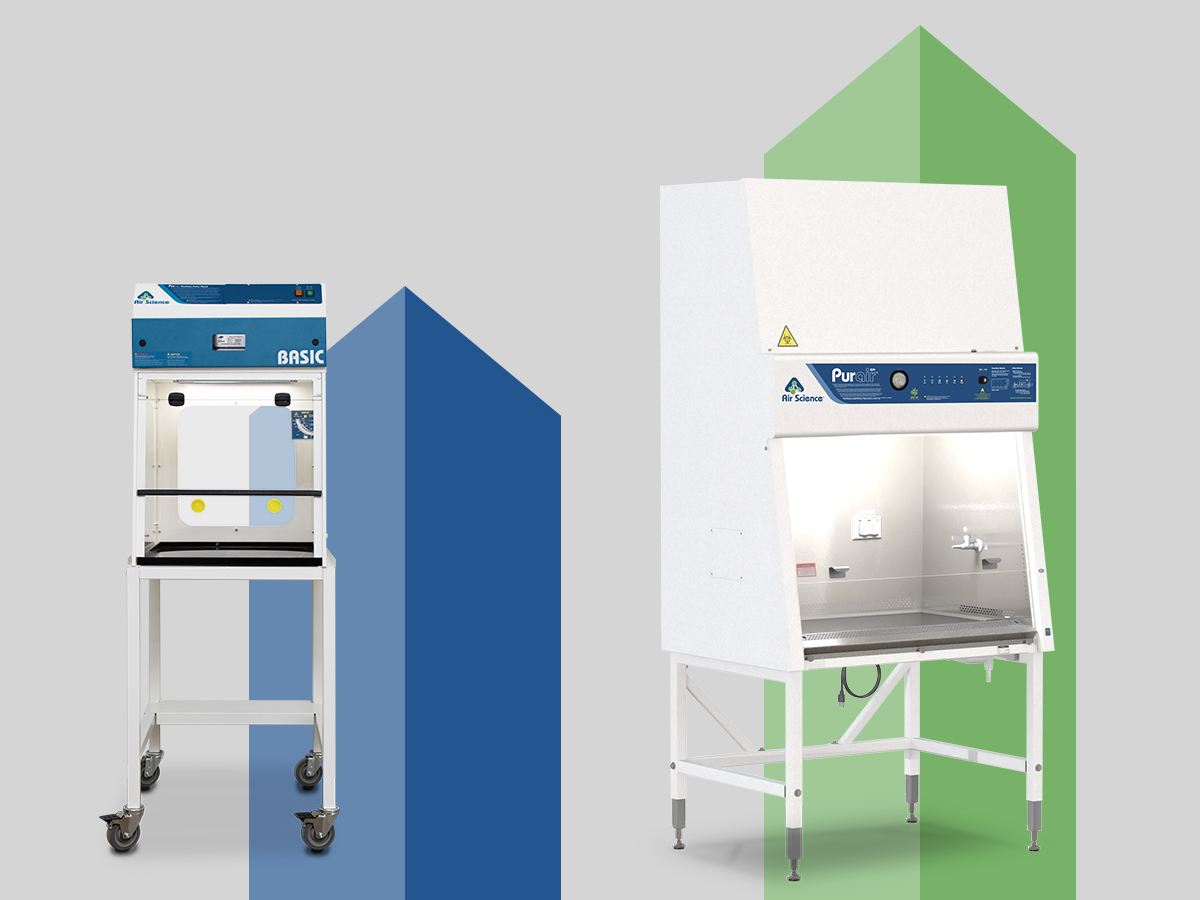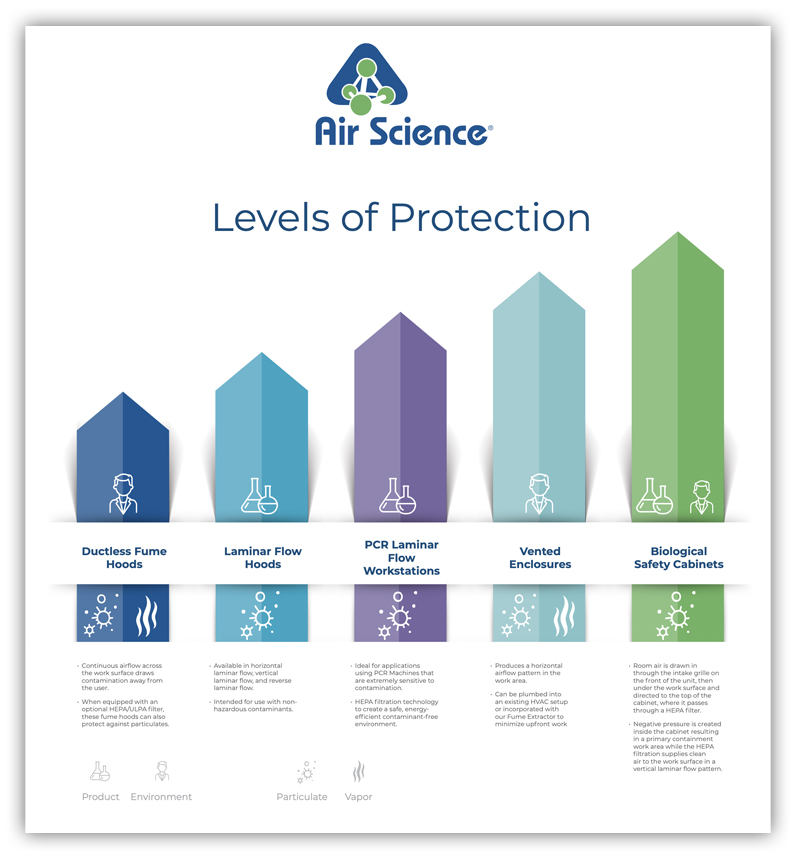
- christina
- Comments Off on Are You Protected? Biosafety Cabinets vs Ductless Fume Hoods
- BLOG, Life Science
Understanding the level of protection your laboratory enclosure offers is essential. Though biological safety cabinets (BSCs) can also be called biosafety cabinets, they should not be confused with ductless fume hoods.
What protection level do ductless fume hoods offer?
Fume hoods protect users from volatile chemicals. For ductless enclosures, these chemical vapors are captured via activated carbon filters. When optional HEPA or ULPA filters are used, ductless fume hoods function as a Class I BSC and can also provide particulate protection.
What protection level do biological safety cabinets (BSCs) offer?
There are three classifications of biosafety cabinets, which each provide different levels of protection.
- Class I – Operator protection
- Class II – Operator, product or specimen, and environmental protection from airborne particulates and biologicals
- Class III – Operator, product or specimen, and environmental protection from dangerous materials, including biosafety level 4 agents
Air Science® Laboratory Equipment Solutions
Chemical Protection
Purair® Basic Series ductless fume hoods are compact and ideal for use in laboratory environments with limited space or where only small volumes of chemical vapors are handled.
Particulate Protection
The Purair BIO offers a Class II, Type A2 NSF certification for personnel, work surface and environmental protection from airborne particulates and biologicals. This cabinet maintains a negative pressure inside the cabinet during operation to prevent contaminants from escaping the work area. The Purair BIO is ideal for life science researchers, various biological protocols, and sterile product preparation in many industries.
Contact us today to request a quote.

